Hi @AUhills
Yes, “Serjt” is the abbreviation for Serjeant, which was the common spelling used within the British Army in those times. In fact it wasn’t formally replaced by “Sergeant” until 1953 and even today one regiment has been allowed to retain it as part of their heritage.
I checked the list of service records for individuals who served in the Revolutionary War, compiled by the US National Archives & Records Service in 1972. It was collated from historical individual local records and covers regular units authorized by the Continental Congresses to form the Continental Army (the ‘American Army’ as such) together with the supplementary units of militia and volunteers created by states, counties and towns (for all ranks). Inevitably as a result of documents that didn’t survive, it’s still probably an incomplete list, but there is no record for a “W. McAllister” of any rank nor indeed even for that surname.
However, looking at other types of records, there is an interesting mention in the George Washington Papers, Series 4, General Correspondence “Abraham Skinner to Robert H. Harrison, July 20, 1779, Return of Prisoners Taken at Stoney Point on July 17th, 1779.” It includes the following entry (among many) for prisoners taken:
Of the 17th Regiment of Foot:
Serj’t McAllister [no initial for christian name is given].
Stoney Point (about 30 miles north of New York City) had been taken by the British from a defending force of about 40 American Patriots in May 1779 and was then garrisoned by eight companies of the British 17th Foot plus detachments of Loyalists, grenadiers, and artillery. Washington’s Continental Army under the command of General “Mad Anthony” Wayne took it back on 16 July 1779, capturing 543 British prisoners. The Washington Papers detail all of their names, but sometimes only as surnames. A handful of captured commissioned officers were immediately exchanged with the British but the other ranks (including McAllister) were marched off to a prison camp at Easton, Pennsylvania. As a serjeant, he was a non-commissioned officer and not valuable for exchange purposes. Doubtless, if he had a powder horn it would have been taken from him.
The 17th Foot had arrived at Boston on 1st January 1776 and in the next two-and-a-half years (before Stoney Point) were one of the most active British regiments. They played a prominent role in the Philadelphia Campaign; pursued Washington’s forces through New Jersey as far as New Brunswick, and again after the Battle of Trenton when Washington had briefly taken the town before withdrawing; saw action at the Battles of Long Island, White Plains, Fort Washington, Princeton, Brandywine and Germantown among others. A case could probably be made for its presence (or at least detachments of it) at all of the places detailed on that powder horn, although it’s not clear which “York County” is being referred to. It might be the one now in Maine (which was part of the Massachusetts Bay Colony at the time).
I tried to check if Serjeant McAllister of the 17th was “W. McAllister” (if so, my bet would be that he was a “William”). Unfortunately, his record isn’t in the UK National Archives: “General Muster Books and Pay Lists 1730-1898” which means either that the documentation hasn’t survived or hasn’t yet been digitised for the archive available on the net.
If you think any of this is worth pursuing, I have a potential historian for the 17th Foot contact who may be able to confirm whether McAllister was a “W. McAllister” and/or comment on the relevance of the places mentioned on the powder horn in relation to the regiment’s activity in the Revolutionary War… although probably not on the authenticity of the horn itself. On the other hand, the horn may be American and none of the above is relevant.
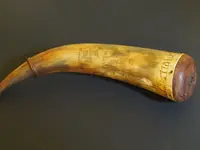
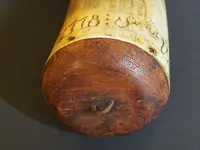
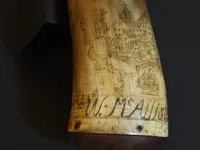
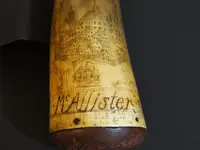
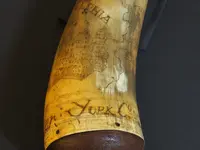
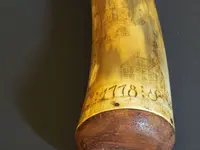
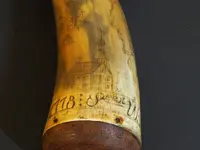
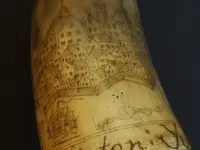

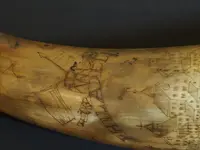


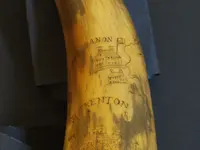
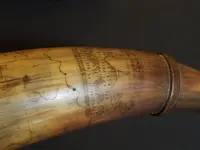
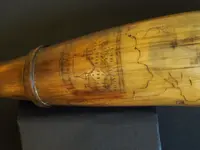
















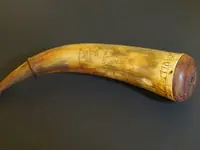


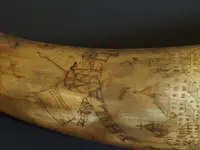

 I'll owe you one for sure!
I'll owe you one for sure!